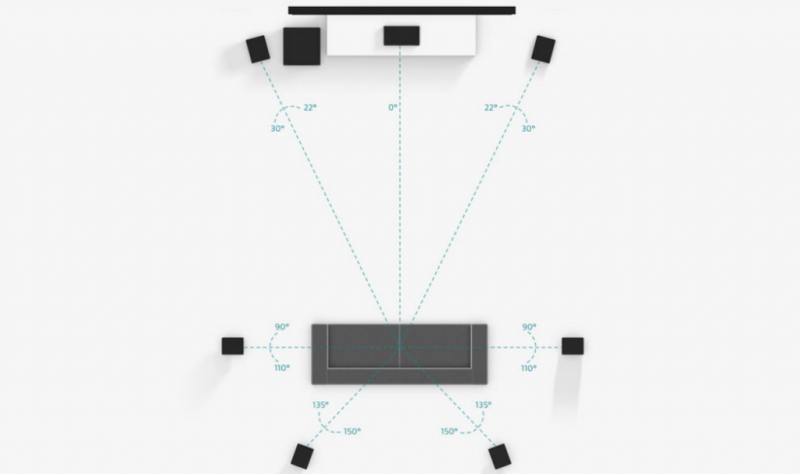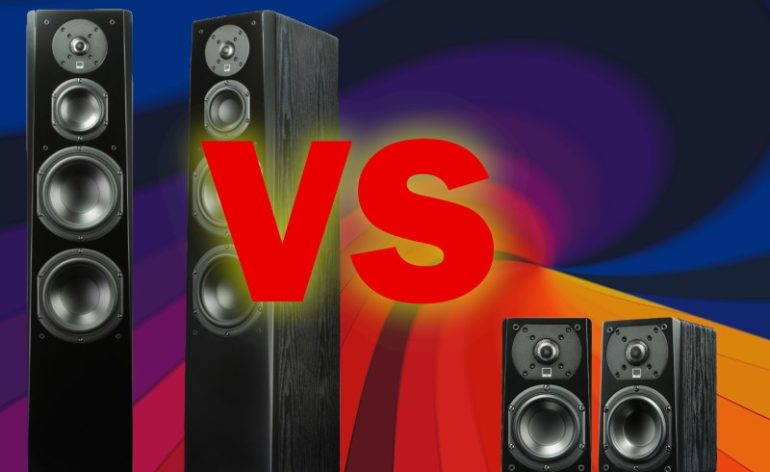Tower Speakers for Surrounds: Good Idea or Waste of Money?
We see this question come up occasionally. Is it a good idea to use tower speakers as surround? The logic is fairly straightforward. If tower speakers are best for your fronts, then shouldn’t they be best for all the other locations? Well, there are just so many reasons…
Tower Speakers Aren’t Inherriantly Better
We’ve addressed this before, but tower speakers aren’t necessarily better than bookshelf speakers. The main benefit of tower speakers is that they are more sensitive (generally) and can play louder and lower. But they are harder to place, cost more, and often are overkill in most rooms. But, if you are going to need more bass and greater output, you are going to need it from your front left and right speakers. They are almost always the furthest from you and get more content than nearly any other speaker in your system. But that doesn’t mean tower speakers would make good (or even better) surround speakers.
Tower Speakers are Hard to Position Properly as Surrounds
Tower speakers are meant to be placed directly on the floor. This puts their tweeters at or near seated ear height. This is great for front speakers. Not so much for surrounds. In nearly every surround position, there is an obstruction between the speaker and your ear. It might be the person sitting next to you, or it might be the headrest. What that means is that the tweeter needs to be higher than ear level.
This means that if you were to use a tower speaker as a surround, you’d need to elevate it somehow. That could be a small stand or plinth, but it has to be something. And I don’t know if you’ve tried to shop for something like that, but it really doesn’t exist. That’s because no one really uses tower speakers as surrounds. If for no other reason than…

Tower Speakers Aren’t Designed to be Experienced Nearfield
When designing a speaker, the use of that speaker is taken into account. A tower speaker is designed to be many feet from you. Surround speakers, in most rooms, are lucky to get a couple of feet away from a couch. Even Dolby’s diagrams (which we hate) show them within arms reach from the edge of the seats. That’s just not how tower speakers are intended to be used.
Tower Speakers Won’t Sound Better
Look back to what we initially said were the advantages of tower speakers. Which of those advantages sound like they are needed for a surround speaker. If you said, “None of the above,” you’d be correct. Surround speakers are very close to you, so you are unlikely to need any extra output. Bass extension is also unwarranted also because of the proximity of the speakers as well as the lack of bass usually mixed into the surround channels. With properly integrated dual subwoofers, there really isn’t any need for extra bass in your surrounds that tower speakers could provide.

Tower Speakers Cost More
The obvious big disadvantage of tower speakers as surrounds is the extra cost. Tower speakers often cost much more than bookshelf offerings. But the cost difference is really quite a bit worse than that. When you choose tower speakers for surrounds, you really aren’t choosing them over a bookshelf speaker. You are choosing them over a much smaller, surround-style speaker. In many home theaters, you can have the exact same experience using a surround-style speaker that can cost a fraction of a tower speaker.
For example, from SVS, you can get the prime surround for $175 versus the prime tower for $600 each. From Klipsch, you can get their least expensive Reference Premiere tower for $350 and their smallest bookshelf for $200 each. You’ll find this across the board. The key here is that, from your seat, these much smaller speakers will sound exactly the same.
But What If You Already Own Tower Speakers?
What if you already own a set of tower speakers. Is there a reason NOT to use them as surrounds? I’d argue yes. Tower speakers aren’t meant to be experienced nearfield. You’ll have to rig up something to elevate their tweeter so that it is at the proper height making them less steady. If it were me, I’d sell those “extra” tower speakers and put that money into smaller, easier-to-place surrounds. I’d then use any leftover money to buy a second subwoofer, add Atmos speakers, or invest in room treatments. If you really want to keep those towers, put them in a different room and use them in a two-channel system for music.


